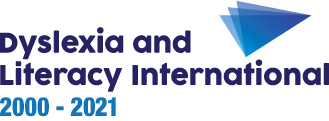Summary of informal assessment
The informal assessment will give you an invaluable insight into the strengths and weaknesses of the child. You will then be able to teach more effectively by matching your teaching to the child’s specific individual needs within the classroom.
For example, suppose that you have found out that the child has difficulties with phonemic awareness and that he or she is weak in reading pseudo-words. You will then design a program aiming at enhancing phonemic awareness and decoding (see Section 3).
Now, imagine that the child proves to have much greater difficulties in reading irregular words compared to regular words and pseudo-words, and seems to have a much better short-term memory for visual than for auditory materials.
You will then get better results in trying to develop the direct access system and the building of orthographic representations by teaching irregular words with visual mnemonics like little coloured drawings, rather than with auditory mnemonics. These techniques are most effective if the links are clearly visualized. The visual cues to learning need to be large, colourful, exaggerated, silly, and funny.
For instance, you could teach the irregular spelling for the word < eye > by transforming this word into a drawing of a face in which the two “e”s would be adapted to represent eyes with lashes and eyebrows, and the “y” would be adapted to represent the nose and the mouth. You can also teach numbers by drawing a visual association with a rhyming word for each number.
Conversely, for children with better auditory than visual short-term memory, you could teach the spelling of the word “eye” with an auditory mnemonic in which the first letter and sound of each word corresponds to a letter of the word “eye”, like “Easter Yields Eggs”.
However, this doesn’t mean that the other type of short-term memory should not be worked on. This is only to make a start by using the child’s learning strengths in order to improve the areas in which he or she has weaknesses.
This example shows how relevant it may be for you to assess the child’s abilities in the various areas listed above. In particular, as illustrated with the teaching of the word “eye”, the assessment of short-term memory will give you valuable additional information for your teaching.
The informal assessment will give you an invaluable insight into the strengths and weaknesses of the child. You will then be able to teach more effectively by matching your teaching to the child’s specific individual needs within the classroom.
For example, suppose that you have found out that the child has difficulties with phonemic awareness and that he or she is weak in reading pseudo-words. You will then design a program aiming at enhancing phonemic awareness and decoding (see Section 3).
Now, imagine that the child proves to have much greater difficulties in reading irregular words compared to regular words and pseudo-words, and seems to have a much better short-term memory for visual than for auditory materials.
You will then get better results in trying to develop the direct access system and the building of orthographic representations by teaching irregular words with visual mnemonics like little coloured drawings, rather than with auditory mnemonics. These techniques are most effective if the links are clearly visualized. The visual cues to learning need to be large, colourful, exaggerated, silly, and funny.
For instance, you could teach the irregular spelling for the word < eye > by transforming this word into a drawing of a face in which the two “e”s would be adapted to represent eyes with lashes and eyebrows, and the “y” would be adapted to represent the nose and the mouth. You can also teach numbers by drawing a visual association with a rhyming word for each number.
Conversely, for children with better auditory than visual short-term memory, you could teach the spelling of the word “eye” with an auditory mnemonic in which the first letter and sound of each word corresponds to a letter of the word “eye”, like “Easter Yields Eggs”.
However, this doesn’t mean that the other type of short-term memory should not be worked on. This is only to make a start by using the child’s learning strengths in order to improve the areas in which he or she has weaknesses.
This example shows how relevant it may be for you to assess the child’s abilities in the various areas listed above. In particular, as illustrated with the teaching of the word “eye”, the assessment of short-term memory will give you valuable additional information for your teaching.


